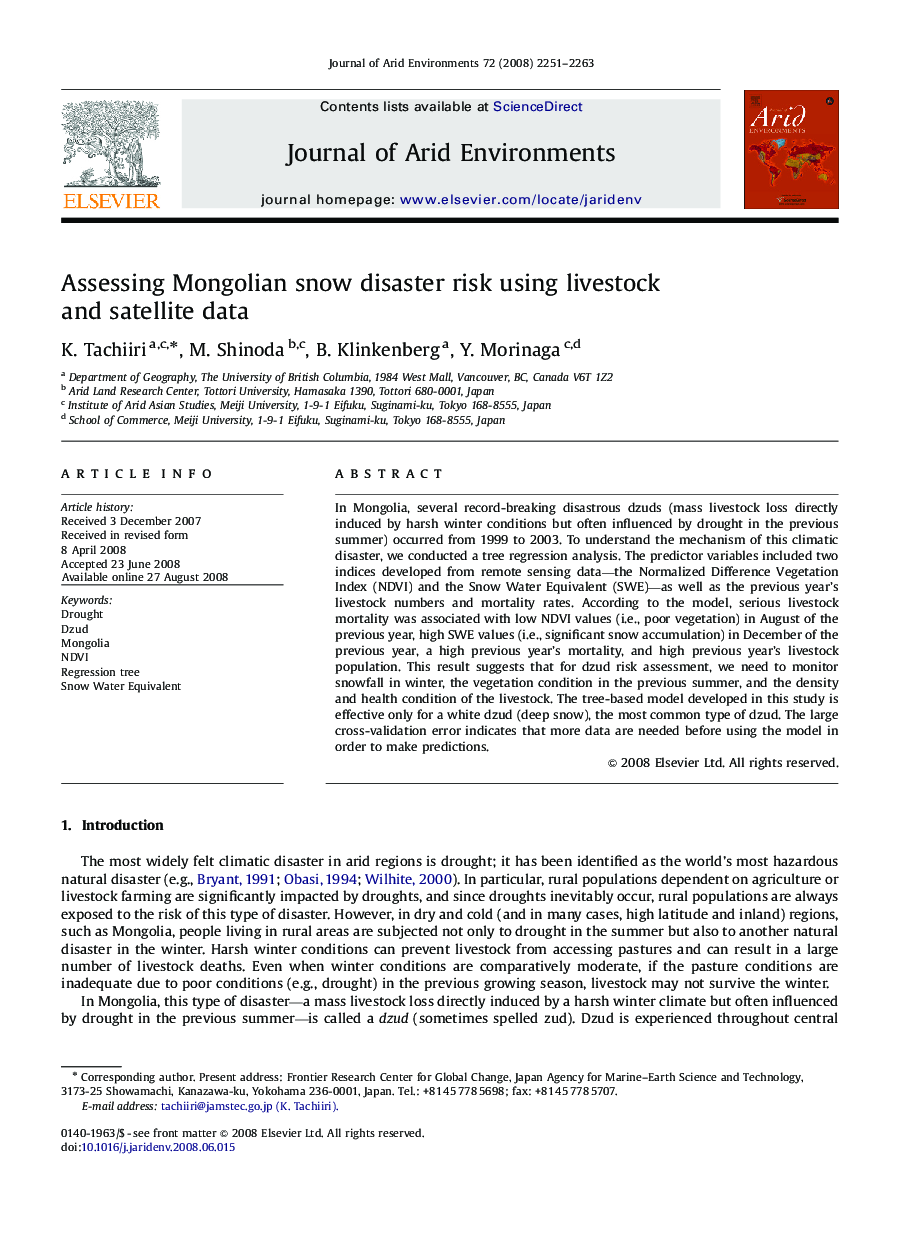| کد مقاله | کد نشریه | سال انتشار | مقاله انگلیسی | نسخه تمام متن |
|---|---|---|---|---|
| 4393998 | 1305513 | 2008 | 13 صفحه PDF | دانلود رایگان |

In Mongolia, several record-breaking disastrous dzuds (mass livestock loss directly induced by harsh winter conditions but often influenced by drought in the previous summer) occurred from 1999 to 2003. To understand the mechanism of this climatic disaster, we conducted a tree regression analysis. The predictor variables included two indices developed from remote sensing data—the Normalized Difference Vegetation Index (NDVI) and the Snow Water Equivalent (SWE)—as well as the previous year's livestock numbers and mortality rates. According to the model, serious livestock mortality was associated with low NDVI values (i.e., poor vegetation) in August of the previous year, high SWE values (i.e., significant snow accumulation) in December of the previous year, a high previous year's mortality, and high previous year's livestock population. This result suggests that for dzud risk assessment, we need to monitor snowfall in winter, the vegetation condition in the previous summer, and the density and health condition of the livestock. The tree-based model developed in this study is effective only for a white dzud (deep snow), the most common type of dzud. The large cross-validation error indicates that more data are needed before using the model in order to make predictions.
Journal: Journal of Arid Environments - Volume 72, Issue 12, December 2008, Pages 2251–2263